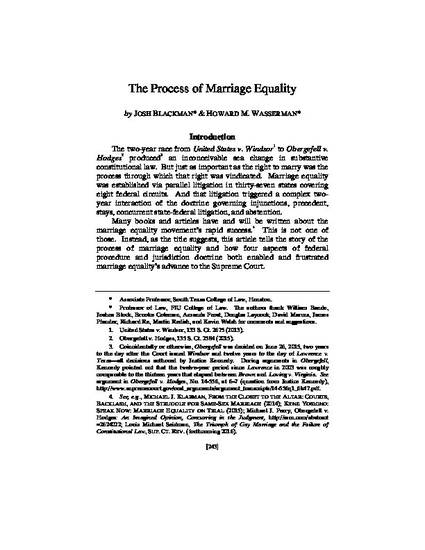
The two-year race from United States v. Windsor1 to Obergefell v. Hodges2 produced3 an inconceivable sea change in substantive constitutional law. But just as important as the right to marry was the process through which that right was vindicated. Marriage equality was established via parallel litigation in thirty-seven states covering eight federal circuits. And that litigation triggered a complex twoyear interaction of the doctrine governing injunctions, precedent, stays, concurrent state-federal litigation, and abstention. Many books and articles have and will be written about the marriage equality movement’s rapid success.4 This is not one of those. Instead, as the title suggests, this article tells the story of the process of marriage equality and how four aspects of federal procedure and jurisdiction doctrine both enabled and frustrated marriage equality’s advance to the Supreme Court.
Available at: http://works.bepress.com/howard_wasserman/69/
